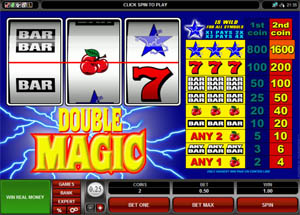If you spend any time around slots players or reading up on slots related literature you will probably have come across a variety of slots types and terms, the most popular of which are often “loose slots” and “tight slots“.
These terms usually refer to the payouts of a certain slot machine. A slot is said to be loose when it is programmed to pay out at a slightly higher percentage than the money put into it while a tight slot pays out at a lower percentage than what it earns.
The actual difference between these two types of slots is the difference in their theoretical payout percentage. Modern slot machines are designed to return a theoretical percentage of all credits earned back to the player and that is where the casinos edge comes into play. When a slot machine is advertised as having a payout rate of 96% that means that it pays back 96% of the money it accumulates.
We use the words “theoretical payout” due to the fact that a machine pays out a certain percentage over an infinite amount of time and amount of slots play. It doesn’t mean that you will get back 96% of the money you bet every time you play – it is more of a long term rate.
You may wonder why casinos would offer loose slot machines at all and theoretically earn less than if they were to only offer tighter games instead. The reason behind this is quite logical – slots players are more likely to keep on playing if they think a machine may be loose and if it is and they win then they are happy enough to either keep playing or return more readily to the casino than they would if they kept losing.
Likewise, if a player feels a machine is too “tight” and keeps losing money he/she is more likely to stop playing. The fact of the matter is that the more time a slots player spends playing on a slot, even if it is a loose one, the more money the casino will make so it is really in their best interest to keep players happy and playing.
It is easy to see that setting slot machines theoretical payout percentage requires a fine balance between being too loose and not earning enough or too tight and not earning enough as it fails to keep enough players playing.
Tight and loose slots at Casinos
In both land based and online casinos, slot machines are mixed up either on the gaming floor or within the casino games lobby so it is not always easy to tell which are loose and which are not. So how can you tell which is which?
There are two main ways of determining a slot’s relative “looseness” (for lack of a better word):
- Try to find out a slot’s payout percentage – some of these are audited and published but more often than not casinos just publish an overall payout rate for their slots instead of per machine. There are however some exceptions and although it may require a great deal of work, it is possible to sometimes find these.
- Play a machine for a certain number of spins or period of time and see how it “feels”. If you find that you win nothing during those spins or that time, move on and compare it to another slot for the same number of spins or time period. Over time as you become accustomed to how certain slots behave you will be able to tell if a machine is loose or not.
While the payout rates of slots is usually regulated by certain government agencies and bodies, beyond those it is really up to the software provider as to what each machines nature will be.
